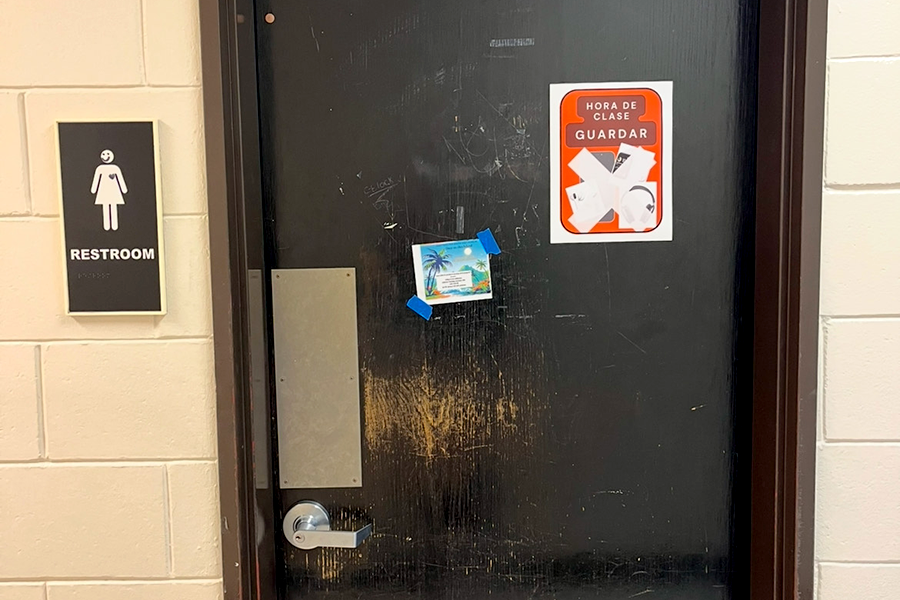“He didn’t fit in anywhere,” Caryn Sullivan, a blogger and mother to an autistic boy, said of her son’s high school experience. Presenting a welcoming environment not only for typical students, but also for those with different learning styles or challenges, is a goal at South.
Autism is an increasingly large factor in the community at South, and for society at large. Currently 1 in 88 children in the United States are diagnosed with autism, while it was just 1 in 150 in 2002, according to the Center for Disease Control and Prevention. At South, we have gone from one classroom for the autism program to three in the past fifteen years, partly to accommodate this increase. David Fielder, a teacher in the Learning Center, attributed this increase to more accurate diagnosis techniques, meaning autism is recognized correctly more often.
More than 30 students attending South have Autism Spectrum Disorder, or ASD. Few generalizations can be made about these students as a group, however. One of the most important things to understand about autism is that it affects each person differently. Jody Hickman, another teacher in the Learning Center at South, said that we have “different levels of students with autism here at South High, [which can make understanding] how complex it can be for students that don’t look like they have a disability more difficult.”
Autistic students at South range from those who attend entirely mainstream classes to those who attend special education classes designed to help with life skills. For those that are in mainstream classes, Hickman said, “if [a student doesn’t] have a visible disability then sometimes students perceive them as being very shy or … vulnerable [seeing] that they don’t fit in socially in the classroom setting and that they just appear to be different.”
Tim, not his real name, a student at South with autism, said that mainstream classes can be difficult, because of the “commotion and all the big groups” but he just, “acts like all the other kids, and try and do my work.”
Some common behaviors that people with autism display can come off as socially awkward or rude, Sullivan said. About her son, she said, “he is far more perceptive than one would think. While it may not look like he [is paying] attention, he typically is.”
High functioning students may, “have a hard time reading facial expressions, or even being able to pick up if someone is joking,” Hickman said. They may “learn what a joke may sound like or when someone is implying something or just the ability to join in a conversation.”
Because autism affects people in a wide range of ways, each student within South has an educational plan developed for them. Although it is on different levels, many students receive some help socially.
Students with autism who function at a lower level attend special education classes all day. They practice simple conversational skills, and go out in the community to learn life skills. Lindberg said that they might practice reading road signs, or buy groceries and cook with them later in the week. Although these students will probably never live without some amount of assistance, at South they learn skills to help them be “as independent as possible,” Lindberg said.
Some students at South are relatively high functioning, and with some help will go on to become entirely independent. Hickman said, “students may not disclose that they have autism because sometimes they’re worried about the stigma of how people will look at them.”
This stigma occurs despite South’s generally accepting atmosphere. “Students are very open and understanding when they see a student that they can recognise as having a disability no matter what that disability might be,” Hickman said. Some students whose tendencies are less visible might suffer from the speculation of other students, or anxiety related to joining groups or volunteering in class. This is different from the way others may experience anxiety because it is “pervasive and can control their life,” Hickman said.
“People think you can always see a disability,” Hickman said. On the contrary, high functioning autism is often not very visible. For this reason, she stresses empathy for everyone, not only towards people with autism. Both Hickman and Fielder said that students who want to relate more easily towards people with autism should “treat people as they would like to be treated.”
Tim said that South feels “friendly,” and the classes have prepared him to enter a transitional college for further education, then get a job. Hickman said, “One of the things that I’ve heard from my students over the years is that when they were in middle school and younger years they were teased a lot, but coming to South they haven’t felt that same ridicule and pressure.”







